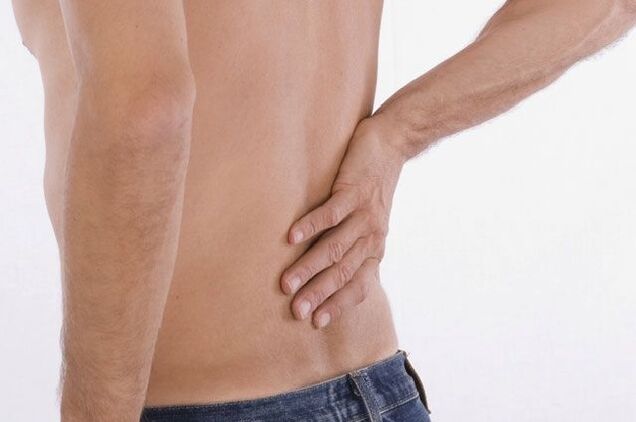Lumbar osteochondrosis is a fairly common condition. Nevertheless, it is not recommended not to let your treatment run under any circumstances, as this can lead to serious consequences and even disability. The older a person is, the more likely they are to develop a disease like lumbar osteochondrosis.

Elderly people with this disease unfortunately have an average of 90% of cases. The particular risk group includes those who do not lead a sufficiently mobile and active lifestyle. And people like that, you see, are the majority now.
The main causes of lumbar osteochondrosis
If the load is unevenly distributed on the chin and trunk muscles, the intervertebral discs are deformed and protrude between the vertebrae. This leads to compression of the spinal nerves. The result is the so-called radicular syndrome, which is characterized by back pain and a significant reduction in the mobility of the lumbar spine.

The situation where the back of a person with lumbar osteochondrosis becomes wedged does not occur suddenly, so experts recommend beginning a solution to the problem before it becomes critical. Hence, it makes sense to test your body for problems.
The main symptoms of osteochondrosis are as follows:
- pulling pains in the lumbar region (in the first stage of the disease, the pain is not too severe, but it becomes worse over time);
- Limitation of mobility in the lumbar vertebrae area;
- Problems walking;
- Numbness of the limbs.
The compression of the intervertebral vessels can even cause diseases of the internal organs. This happens when the disease is severely neglected. If you notice any of the above symptoms, it is highly recommended that you immediately consult a specialist: a neurologist or therapist. The doctor will prescribe comprehensive therapy that will effectively prevent the situation from worsening.
What to do in the event of an acute attack of osteochondrosis
However, should you ever get your back twisted in an unexpected way, you should know what specific measures you have to take in anticipation of an ambulance team that needs to be called. So we are talking about the following manipulations:
- in no case should a person be helped to straighten up, since such actions can not only provoke a new attack of pain, but also lead to an even greater displacement of the vertebrae, which is fraught with the development of paralysis;
- if possible, help the person lie down on the bed or couch;
- do not touch the sore back area;
- the victim must be given an anesthetic that will relieve pain;
- With moderate pain syndrome, the lumbar spine should be treated with an anesthetic ointment.
Features of the treatment of lumbar osteochondrosis
The main task that needs to be solved in the treatment of lumbar osteochondrosis is the elimination of pain. After that, a number of measures should be taken to restore mobility and eliminate the cause of compression of the spinal nerves. Basically, in any case, the goal of treatment is the patient's full recovery. In advanced cases, one speaks of the induction of stable remission with restoration of most motor functions.
Treatment can be conservative and timely. Conservative therapy for lumbar osteochondrosis includes pain reliever classes, as well as general strengthening and anti-inflammatory therapy. Surgical treatment is carried out only in cases when there is a real risk of paralysis against the background of a significant displacement of the intervertebral disc. During the operation, the fracture is removed, the intervertebral discs are replaced and the bone growths, adhesions and scars on the vertebrae are removed.
In some cases, the use of folk remedies can be a fairly effective method. For example, you can make compresses based on medicinal herbs. It also makes sense to wrap the lumbar area with scarves or shawls made of natural camel or some other wool.
Features of rehabilitation for osteochondrosis
In order to consolidate the results of the treatment carried out, it is strongly recommended to take rehabilitation measures with great seriousness. It is better to do it during remission in medical and physical training centers that are open in almost every city. Rehabilitation programs are developed separately for each person, the complex being selected individually. It covers all types of treatments including exercise therapy, massage, and physical therapy.





















